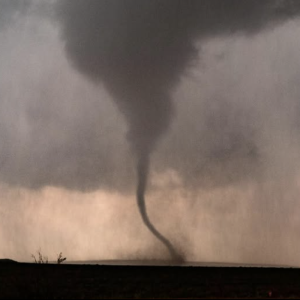On May 7, 2025, Pakistan’s Defense Minister Khawaja Asif sent shockwaves through South Asia by claiming that the Pakistani Air Force shot down five Indian warplanes and captured several Indian soldiers during intense military clashes along the Line of Control (LoC) in Kashmir. The announcement, delivered in a televised address on ARY News, marks a dramatic escalation in the ongoing conflict between the two nuclear-armed neighbors, which was reignited by a deadly terrorist attack in Pahalgam, Indian-administered Kashmir, on April 22. The attack, which killed 26 civilians, mostly Hindu tourists, prompted India to launch missile strikes on alleged terrorist targets in Pakistan and Pakistan-administered Kashmir earlier today. As the world grapples with the implications of this volatile crisis, Pakistan’s unverified claims have sparked a fierce debate, with India dismissing them as propaganda and the international community urging restraint to prevent a catastrophic war.
Asif’s statement detailed the alleged downing of three Rafale jets, one Sukhoi Su-30, and one MiG-29, which he claimed were intercepted within Indian airspace. He also asserted that Pakistani forces took Indian soldiers prisoner, though no specifics about their identities or numbers were provided. Speaking to Bloomberg TV, Asif framed the actions as defensive, stating, “The downing of the jets are not hostile acts, and Pakistan was defending its territory.” Pakistan’s Information Minister Tarar Attaullah further escalated the rhetoric, telling the BBC that India had “crossed our limits” and that Pakistan would do all it could to protect its sovereignty. Pakistani state media, including Pakistan Television (PTV), echoed these claims, reporting that all Pakistani aircraft remained safe while asserting that the military was delivering a “befitting reply” to India’s aggression. A Pakistani military spokesperson told Reuters that eight civilians were killed and 35 injured in India’s strikes, with two people missing, adding fuel to Pakistan’s narrative of victimhood.
India, however, has categorically denied Pakistan’s claims. Indian defense sources, cited by NDTV, labeled the assertion of downed jets as “completely false” and accused Pakistan of spreading misinformation to salvage its image domestically. India’s focus remains on “Operation Sindoor,” a series of precision missile strikes targeting nine terrorist sites linked to groups like Lashkar-e-Taiba, Jaish-e-Mohammed, and Hizbul Mujahideen in locations such as Muridke, Bahawalpur, and Muzaffarabad. The Indian government stated that the strikes were intelligence-driven, aimed at dismantling terror networks responsible for the Pahalgam massacre. The Indian Embassy in Washington emphasized that the attacks were “focused and precise,” avoiding Pakistani military facilities to minimize escalation. Indian media outlets, including Oneindia, reported that India dropped fuel tanks over Pampore during aerial operations but lost no aircraft, further challenging Pakistan’s narrative.
The absence of visual or independent evidence for Pakistan’s claims has intensified skepticism. No footage of downed jets or captured soldiers has surfaced, and analysts question Pakistan’s ability to down advanced Rafale jets, which are among the most sophisticated in India’s arsenal. Posts on X reflect this uncertainty, with users like @JhaRahul_Bihar calling Pakistan’s claims a “bloody fake narrative” and others noting that only a downed drone has been reported. A Pakistani army spokesperson, Lt. Gen. Ahmed Sharif, claimed on X that five Indian jets were shot down and no Pakistani aircraft were damaged, but these assertions remain unverified. The Guardian reported that a Pakistani military spokesperson admitted to Reuters that the jets were allegedly downed in Indian airspace, a detail that raises questions about the feasibility of Pakistan’s claims. The lack of clarity has led to accusations of an “info war,” with both sides leveraging media to shape public perception.
The roots of this crisis lie in the Pahalgam attack, which India attributes to Pakistan-backed militants from The Resistance Front, a proxy of Lashkar-e-Taiba. The attack, described as execution-style and targeting Hindu civilians, was the deadliest in Indian-administered Kashmir in nearly two decades. India’s response, including the suspension of the Indus Waters Treaty, closure of the Wagah-Attari border, and expulsion of Pakistani diplomats, has mirrored Pakistan’s retaliatory measures, such as suspending trade and closing its airspace. These tit-for-tat actions have crippled bilateral relations, leaving little room for dialogue. The UN Security Council held emergency consultations on May 5, with Secretary-General António Guterres calling for “maximum restraint.” U.S. Secretary of State Marco Rubio and Russian President Vladimir Putin have also urged de-escalation, with Putin expressing support for India’s anti-terrorism efforts in a call with Prime Minister Narendra Modi.
Kashmir, the epicenter of the conflict, is bearing the brunt of the escalating tensions. In Indian-administered Kashmir, schools in regions like Baramulla and Kupwara have been shut, and civil defense drills are underway, with air raid sirens tested for the first time in decades. In Pakistan-administered Kashmir, over 1,000 religious schools have closed, and residents in Muzaffarabad reported power blackouts and explosions during India’s strikes. Civilians on both sides are fortifying bunkers and preparing for potential further hostilities, with many expressing fear of being caught in retaliatory crackdowns. The human toll is already evident, with three Indian civilians killed in Pakistani shelling across the LoC, according to the Indian army, and eight civilian deaths reported by Pakistan.
Analysts warn that the current crisis surpasses the 2019 Balakot clash, when Pakistan downed an Indian jet and captured a pilot. Michael Kugelman, a South Asia expert, noted on X that Pakistan’s reported response, if true, exceeds the scale of previous escalations, placing both nations “higher up the escalatory ladder.” The absence of robust crisis management mechanisms heightens the risk of miscalculation, particularly given the nuclear capabilities of both countries. Pakistan’s reported military support from Turkey, including recent visits by Turkish C-130 aircraft and a warship, has raised concerns in India, though both nations deny any transfer of military hardware. The involvement of external actors could further complicate the situation, drawing international attention to the need for urgent diplomacy.
As shelling continues along the LoC, the international community faces a daunting challenge in preventing a broader conflict. The lack of verifiable evidence for Pakistan’s claims, combined with India’s resolute stance, underscores the complexity of navigating truth in a polarized information landscape. For now, the people of Kashmir and the global community hold their breath, hoping that restraint prevails over rhetoric in this high-stakes standoff.

